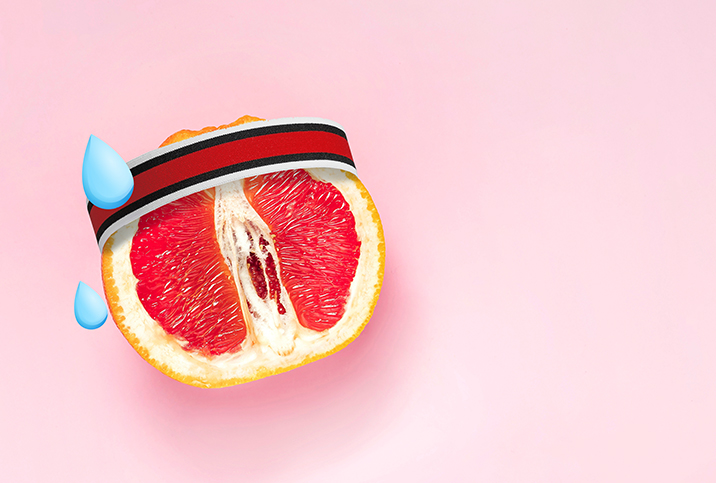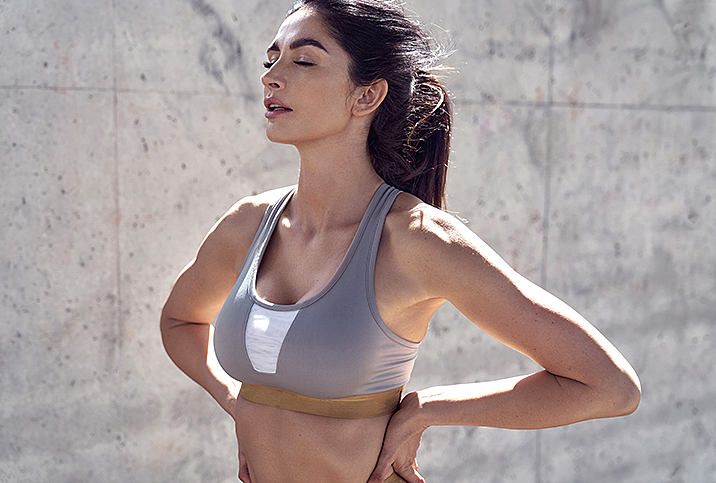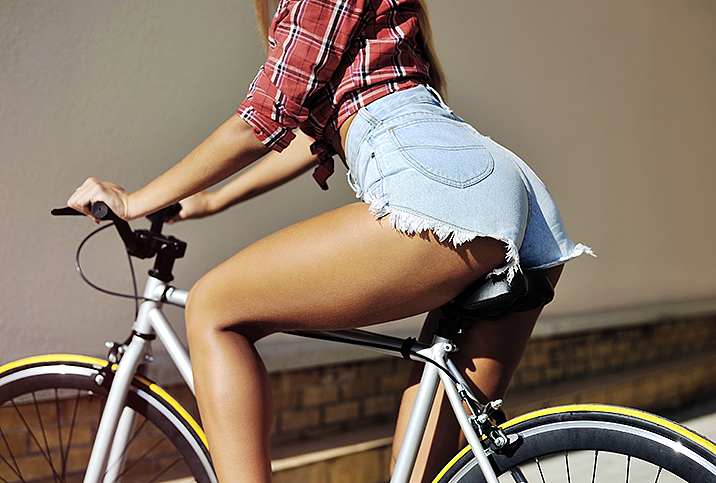Is 'Sports Vagina' an Actual Condition?

Ask enough athletes and you're bound to find more than a few experiencing genital discomfort resulting from exercise. The most common symptoms include itching, burning, redness and chafing in the vulvar, or external, genital area. It's a condition unofficially termed "sports vagina."
Sports vagina has been well documented in informal spaces, including blogs, forums and commercial websites. Searching the term on Google turns up more than 64 million results. That's a lot of discomfort.
It may come as a surprise then that the term sports vagina appears far less often in medical literature. In fact, it appears exactly zero times.
That's because the condition isn't real, according to Lauren Streicher, M.D. "Sports vagina" is not a term she uses and it's not something she hears from patients, either. Streicher, a clinical professor of obstetrics and gynecology at Northwestern University's Feinberg School of Medicine in Chicago, instead calls exercise-related pain exactly what it is: vulvar discomfort. This term is, in fact, very real.
"You sweat around your genitals, just like rest of your body," Streicher said.
This sweat, combined with other factors such as the fit of your clothes, can cause discomfort. It's more likely to happen to athletes, but it can happen to anyone on a hot enough day.
Michele Olson, Ph.D., exercise physiologist and senior clinical professor of sports science at Huntingdon College in Montgomery, Alabama, agreed.
"It can be related to a range of factors, from how you sit on a spin bike to whether your underwear, leggings or shorts don't fit properly," Olson said.
The verdict is in then: Like winter vagina, the myth of sports vagina just has a different name.
How to relieve vulvar discomfort
If you want to avoid vulvar discomfort, evaluate your gym wear. First, consider the material makeup of your clothes. Though some people suggest cotton is best, Streicher said the research is inconclusive. Olson does not subscribe to the cotton-only camp, either; she recommends lightweight tech materials, such as polyesters and nylons, that wick sweat.
The second way to evaluate your gym wear is by its tightness. Both Olson and Streicher agree: Loose clothes are best. These allow for more breathability and may eliminate some uncomfortable friction.
The third: Don't hang out in your workout clothes. Though it can be tempting to run errands or get food if you're already out and about, sweaty clothes can leave your genitals at risk. At the very least, Olson recommended changing clothes before leaving the gym or field. Ideally, you should also immediately shower to further remove sweat and germs.
Underwear is another consideration. Your underwear—or lack of it—can play a role in your vulvar health. "Underwear protects your clothes, not your genitals," Streicher said, meaning underwear is not required for a comfortable workout. Eliminating underwear may lessen friction against your vulva, especially when you wear looser bottoms.
Spinners and cyclists, this one's for you: Make sure your bike seat is adjusted properly. According to Olson, sitting on a poorly adjusted bike seat can put pressure on the genital area. This can cause irritation. Sitting like this for a long time can compress nerves, which leads to tingling or numbness.
Streicher recommended that serious cyclists and spinners invest in good bike shorts to combat this problem. Olson suggested bottoms with a padded chamois.
The do's and don'ts of vulvar discomfort
Discomfort associated with exercise can be scary. Depending on its severity, it may be tempting to try any and every cure online in order to get relief. Unfortunately, this can lead to more problems in the long run.
Based on Olson's and Streicher's recommendations, consider avoiding the following products:
- Douches and scented washes or soaps, as these can irritate your genital area.
- Harsh detergent can do the same, so if you're experiencing a problem, Streicher suggested trying a different product.
- Though talcum powder was once recommended to decrease genital friction during exercise, Olson recommended using an emollient such as Vaseline or A+D ointment instead.
Don't forget, you can always call your doctor for personalized advice and suggestions.
Vulvar discomfort: When to make changes
If you're experiencing exercise-related discomfort, you can implement the above changes immediately to see what works for your body.
If you're not experiencing pain, however, you may not need to make any changes, even if you're wearing, for example, tight gym clothes.
"If you don't have problems, don't worry about it," Streicher said.
As the saying goes, if it ain't broke, don't fix it.
When to see a doctor
The symptoms associated with vulvar discomfort are very general. Itching, burning and chafing can indicate other conditions, including yeast infections and contact dermatitis, so it's important to confirm that what you're experiencing is, in fact, vulvar discomfort.
One way to differentiate between yeast infections and vulvar discomfort is to look for the former's distinctive discharge, which is white and looks like cottage cheese. Olson said this discharge may be accompanied by itching, which may become intense when urinating.
Streicher further delineated the two by the length of time you're in pain: "Yeast infections are persistent. Vulvar discomfort is not."
If what you're experiencing bothers you even when you aren't exercising, call your doctor to rule out other conditions.


















